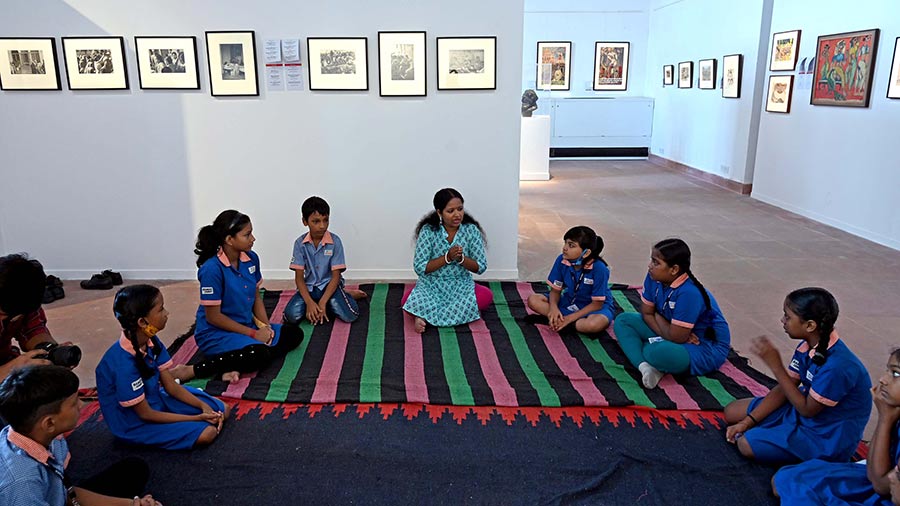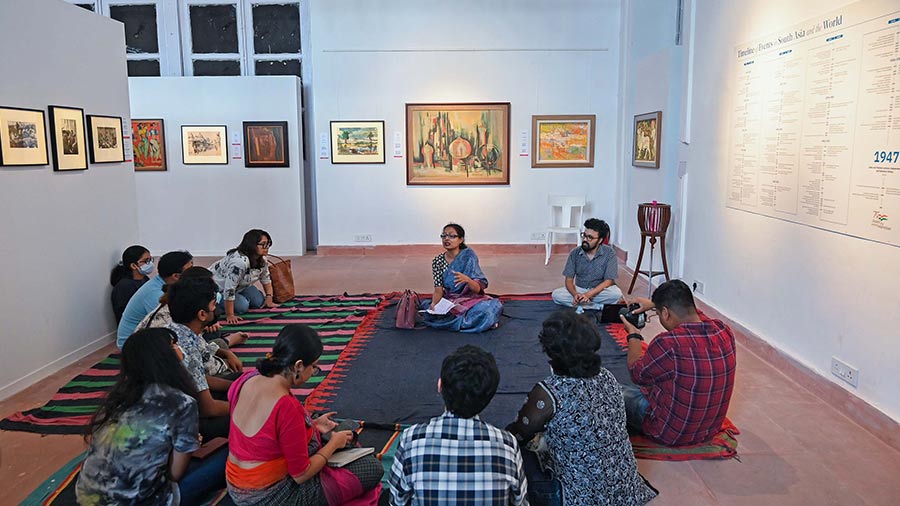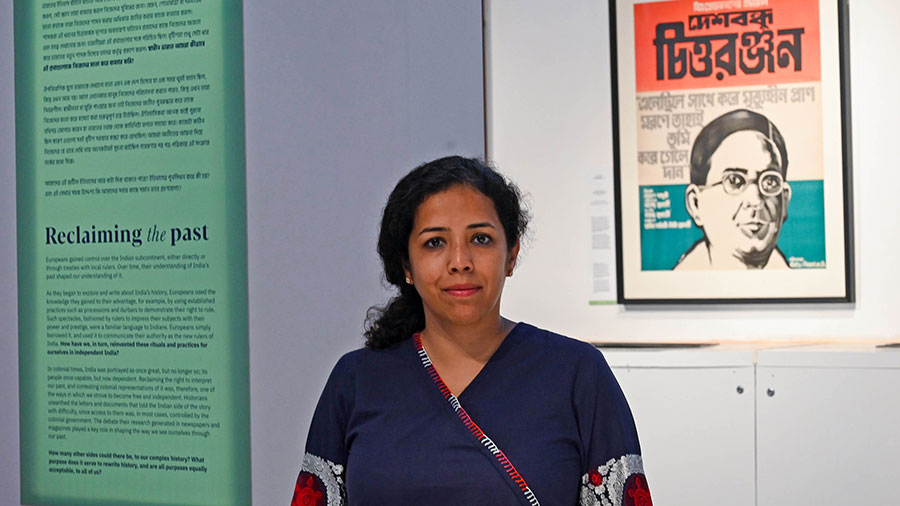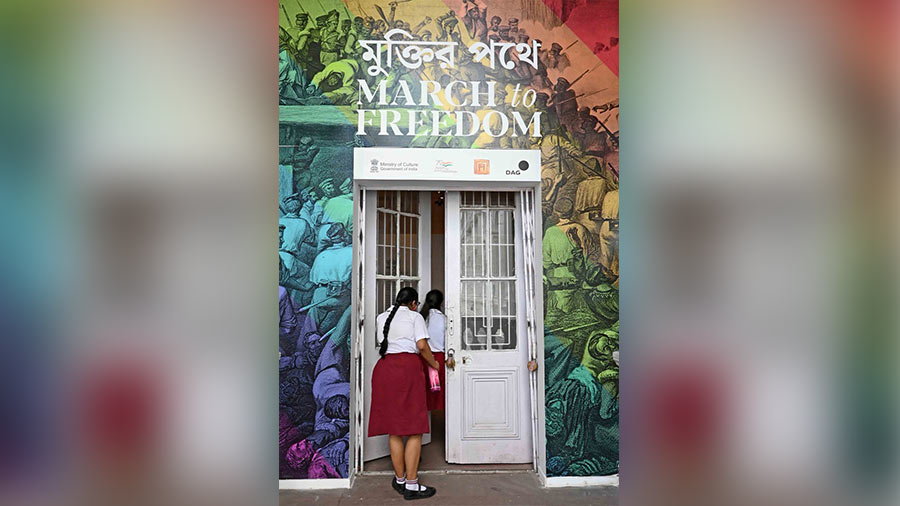The meaning of freedom has been passed down from generation to generation through stories, music and pictures. March to Freedom, a collaborative exhibition by the Delhi Art Gallery (DAG) and the Indian Museum, looks into this inheritance to find out its relevance in a world that has changed since India made its tryst with destiny.
Marking the 75th anniversary of Indian Independence, the interactive exhibition, which started on July 23 and will continue till September 18, at the Indian Museum showcases over 160 portraits and engages viewers in different activities and events.
‘Golpo Boli, Golpo Shono/ Hear me out!’ was one such event where the meaning of freedom in modern society was explored. At this storytelling event on August 13, four professionals from different walks of life shared their personal experiences. The event saw four sessions attended by over 50 individuals, including students, academics and parents.
Photojournalist Saibal Das, who had covered civil and political unrest in northeastern India, spoke about how photography and journalism can play a big role in recording such events. He discussed how photographs could be misleading as their contexts depend on the perception of the viewer.

Photojournalist Saibal Das at a storytelling session Amit Datta/My Kolkata
Talking about the curse of human trafficking, Jhulan Mondol of Kolkata Sanved touched upon the organisation’s work with victims of human trafficking and gender-based violence. She described what it actually took to achieve the freedom of mind and body in a society riddled with biases and prejudices. She demonstrated how dance could help one to release trauma and overcome fear.

Jhulan Mondol of Kolkata Sanved interacts with students Amit Datta/My Kolkata
Ratnaboli Ray, mental health activist and clinical psychologist, used art as a medium for free expression. Questioning the relevance of setting a uniform behaviour pattern for every person, she wondered why society should expect a stereotypic behavioural pattern from persons with mental disability. She also pointed out that every person, including those afflicted with mental health problems, should be free in their own mind and follow their own behavioural maps.
At yet another session, Rongili Biswas, musician and academic, narrated how music and education could help people sense the true meaning of freedom. She explained the pros and cons of the concepts of independence and freedom. She also spoke about how she had been archiving the collaboration between two musicians — her father Hemango Biswas and Bhupen Hazarika — before and during the language riots in Assam in the 1960s.

Musician and academic Rongili Biswas speaks at a session Amit Datta/My Kolkata
Mrinalini Venkateswaran, Leverhulme Early Career Fellow in History, Royal Holloway, University of London, curated the exhibition. “One of the key points of this exhibition is to see the stories that we know, or study or have been told by others from another point of view. I think it’s good to revisit and rethink our understanding of the past — we always learn something new and that is important.”
“The exhibition is not about artworks telling a story. In fact, some of the artworks on display here have nothing to do with the story of freedom. But I pulled them in because they allow us to talk about gaps in the story and gaps in our knowledge of the story,’’ she explained.

Mrinalini Venkateswaran has curated the exhibition Amit Datta/My Kolkata
Visitors were impressed with the artworks and interactive events. Mrittika Mallick, a student of English literature at Jadavpur University, said she got to know more about Independence through struggles like the Assam Mutiny by attending one of the sessions. “I love DAG exhibitions and hence registered for the session. Saibal sir taught us to see history from a personal perspective. It was a homely session that took me back to my childhood.”
Nupur Ghosh, vice-principal of Mahadevi Birla World Academy, attended the sessions hosted by Saibal Das and Ratnaboli Ray. "The sessions sparked the question whether we are still free today. Ratnaboli has approached this question from the point of view of her patients who are behind this huge wall. Are they at all free? These are thought-provoking questions. I both the speakers wanted to say that we need to break the shackles of our own minds to become free.’’
Manoswita Mallick, a 13- year- old student at Modern English Academy, Barrackpore, also enjoyed the exhibition. "Freedom or independence is all about expressing yourself fully without having to think twice about what is right or what is wrong. Real freedom lies in feeling free and being able to tell the world what you are feeling without fearing the consequences," she said.
